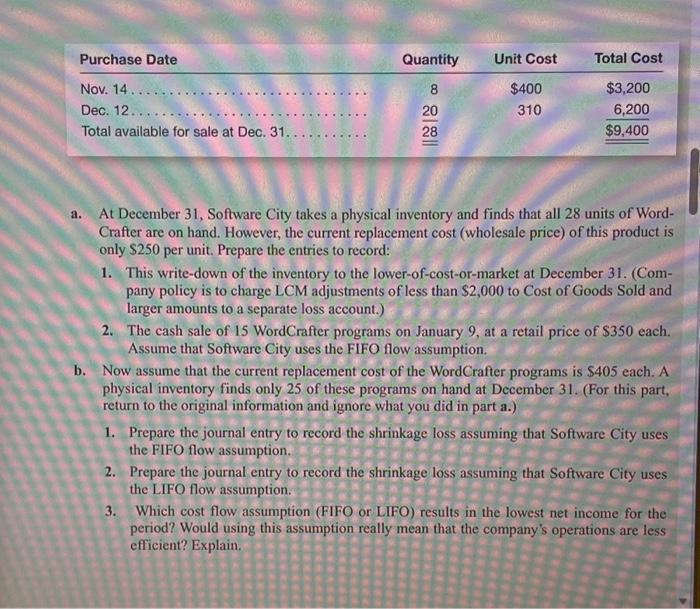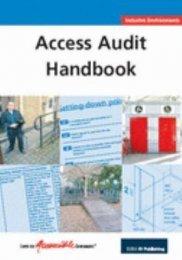Answered step by step
Verified Expert Solution
Question
1 Approved Answer
Purchase Date Nov. 14... Dec. 12... Total available for sale at Dec. 31... a. Quantity 8 20 28 Unit Cost $400 310 Total Cost $3,200
Purchase Date Nov. 14... Dec. 12... Total available for sale at Dec. 31... a. Quantity 8 20 28 Unit Cost $400 310 Total Cost $3,200 6,200 $9,400 At December 31, Software City takes a physical inventory and finds that all 28 units of Word- Crafter are on hand. However, the current replacement cost (wholesale price) of this product is only $250 per unit. Prepare the entries to record: 3. 1. This write-down of the inventory to the lower-of-cost-or-market at December 31. (Com- pany policy is to charge LCM adjustments of less than $2,000 to Cost of Goods Sold and larger amounts to a separate loss account.) 2. The cash sale of 15 WordCrafter programs on January 9, at a retail price of $350 each. Assume that Software City uses the FIFO flow assumption. b. Now assume that the current replacement cost of the WordCrafter programs is $405 each. A physical inventory finds only 25 of these programs on hand at December 31. (For this part, return to the original information and ignore what you did in part a.) 1. Prepare the journal entry to record the shrinkage loss assuming that Software City uses the FIFO flow assumption. 2. Prepare the journal entry to record the shrinkage loss assuming that Software City uses the LIFO flow assumption. Which cost flow assumption (FIFO or LIFO) results in the lowest net income for the period? Would using this assumption really mean that the company's operations are less efficient? Explain.

Step by Step Solution
There are 3 Steps involved in it
Step: 1

Get Instant Access to Expert-Tailored Solutions
See step-by-step solutions with expert insights and AI powered tools for academic success
Step: 2

Step: 3

Ace Your Homework with AI
Get the answers you need in no time with our AI-driven, step-by-step assistance
Get Started


